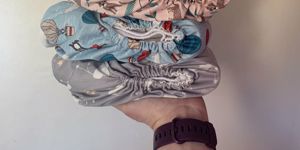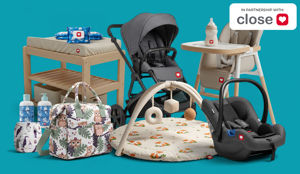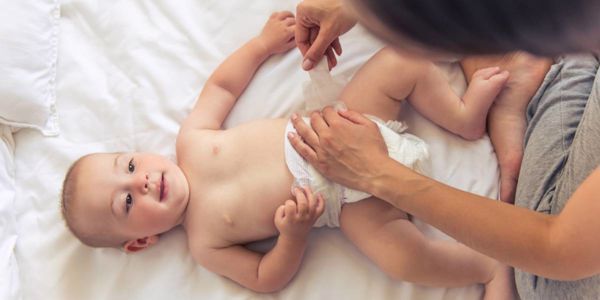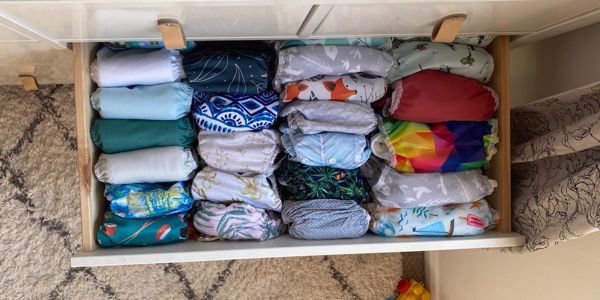Trying to be more sustainable is something which we are all trying to achieve at the moment. Being eco-friendly and trying to reduce our waste is all over the media. Being a parent one of the biggest sources of waste is nappies. Or it definitely feels like that sometimes. Disposable nappies take around 500 years to disintegrate in a landfill. This is a considerable amount of time. They will be still on the planet long after our grandchildren have passed. However, there is another option when it comes to nappies and that is reusable or cloth nappies as they are also known.
This is something that I discovered when pregnant with my second child Troy. I thought they were going to be a lot of hassle and messing about. Even though I had decided that I was going to go ahead and use them. However, after 18 months of exclusively using cloth nappies, I now could not feel more differently. Even people who were not convinced when we shared our decision have been shocked by how easy they are to use. They are one of the best things we have done differently with Troy.
There are 5 different versions of cloth nappies. Some work for some people and others works for others. Just like some disposable nappies brands work for some people and not others. It all depends on your child.
Terry Squares
The first one people think of when you say cloth nappies are Terry squares. These are the ones which our grandparents or parents may have used. These are square pieces of Terry fabric that can be folded into different folds. There are too many to mention in this post so if you are interested in this type of nappy I would recommend googling the folds. It may take you a few goes to find out which works best for you and your baby. They are fastened by a safety pin or fastener and you have to have a waterproof wrap over the top. This is a type of reusable that is often used not long after birth and for the first few months after. These are the cheapest reusables and dry super-fast. I would recommend practising the folds on a doll before the baby is born. This is something I wish I had been able to master before Troy was born because they look amazing on cute newborns.
Pre-Fold Nappies
Similar to the Terry Squares there are Pre-fold nappies. These are pre-folded which means they're not as hard to use. However, you do still need to know how to do some of the folds which you're going to use on your child. These again are something which are usually used in the first few months of a baby's life. They dry super quickly which is a huge bonus when you have a baby who can go through nappies so fast. The two most common folds when it comes to these nappies are the pad fold and the angel fold.
The pad fold is the easiest to use, however, is likely to get dirty pretty easily. All you have to do is fold one-third of the pre-fold in on each side. Then place the pad inside a wrap and fasten the wrap onto the baby. Then away you go, it is that simple. The angel fold is slightly more work, however, it may contain the poo a little bit better. All you need to do is fold 1/3 of the pre-fold on each side. Open out the folds at the top end of the pad to form ‘wings’. Place the winged end under the baby’s bottom. Fold up a short section from the bottom edge then bring the folded end up between babies' legs. Bring in the two wings around the baby's waist and fasten with a nappy fastener. Don't forget to put a wrap over the top to make it waterproof. Again, this is something you may want to practice on a doll before your baby is born.
Shaped/ Fitted Nappies
This is the type of nappy that we use for overnight. These are highly recommended if you are going to be having your baby in childcare from a young age. As they are simple for the staff to be able to use. You should not get many leaks with this type of nappy either. The ones which we use are the totsbots bamboozle. We have never had any issues with these at all. There are other types of these nappies by other brands as well there is not just these ones.
You use these like a normal disposable nappy, however, you need to add an additional booster. More so if you are using them overnight like we are. You place the booster inside the shaped nappy making sure that it is shiny side up if you are using the mother ease sandy boosters. You then fasten the nappy like a normal disposable nappy. They may have velcro or poppers depending on the brand which you are using. Then you need to add an additional wrap which you put over the nappy. These are super simple and something which we have loved using.
All in one nappy
All in one nappies are the closest you are going to get to a disposable style nappy. These make up the majority of our stash. We use the bambino mio miosolo nappies. These are super simple to use, you get the insert and push it through to the inner part of the nappy. You may find that over time you want to add another booster to make them more absorbent. This is something which we found ourselves doing after about 6 months
You then can add a fleece liner to the inner part which is going to sit against your child’s bum. This allows you to easily dispose of poo and stops your nappies from staining. You then fasten them like you would a disposable nappy. When you have finished with the nappy you just pull the insert, then you can put it where you store nappies till nappy wash day. For us, we have a box where they're stored. If there is poo, we scrape it off in the toilet and flush as much as we can. I promise you don’t touch that much poo. No more than you would with a disposable.
Pocket Nappies
Pocket nappies consist of a waterproof outer and a fleece inner line. A bit like the all in one nappies, however, they do not have an absorbent insert. This is something which you have to add. You add them to the pocket at the front. Then you fasten again with the velcro or poppers depending on the brand. Like you would with a normal disposable nappy. These are supposed to be super simple, however, I do not have any experience with these. You do still get the pretty patterns that can become addicting to collect.
I hope this post has shown you that it doesn't have to be hard or complicated to use reusable nappies. Even if you just make one nappy which you use a reusable one that can help massively. You do not have to go the whole hog and exclusively use cloth nappies like us.
Have you tried cloth nappies? If so which ones did you use?







